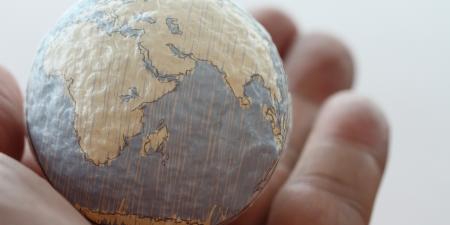Of the 12 million people living with HIV/AIDS in developing countries who will die within 3 years without immediate access to affordable antiretroviral medicines, only 4 million were receiving treatment at the end of 2008. Access to a much broader list of essential medicines (those defined as essential for health by national governments or the World Health Organization, or WHO) is equally dismal. Recent WHO studies found that public pharmacies in developing countries had only one-third of essential medicines available onsite, and the private pharmacies had only two-thirds of medicines available. End prices were 2.5 and 6.5 times international reference prices at public and private pharmacies, respectively [1]. As poor as availability of essential medicines is, access to newer medicines, including those for chronic diseases, is even worse, because these patent-protected medicines are too expensive to be included on essential medicine lists. Finally, there has been so little research and development into neglected diseases that affect primarily poor people in poor countries that medical treatments do not even exist for these conditions [2].
Many factors contribute to a lack of access to existing medicines in developing countries: tattered health systems, insufficient numbers of health workers, weak regulatory regimes, and poor procurement and distribution systems. Other conditions—import duties and taxes, mark-ups throughout the distribution chain, and even corruption and product diversion—coalesce to produce high drug prices. Weak research and development (R&D) capacity and limited investment in R&D combine to restrict research on neglected diseases in developing countries. But clearly one of the factors most implicated in unavailability (and unaffordability) of medicines in developing countries is the current intellectual property regime—a regime that allows proprietary drug companies with intellectual property monopolies to charge high prices and maximize profit by the sale of medicines that only rich and well-insured people can afford while simultaneously deprioritizing R&D into products that poor people need.
The unconscionable gap in access to life-saving and life-enhancing medicines reflects a massive disconnect between, on the one hand, the perceived interests of rich countries in the global North and the proprietary pharmaceutical companies that research, develop, and produce patented medicines and, on the other hand, the interests of developing countries in the global South. This disconnect occurs at the intersection of two separate systems: national and international intellectual property regimes, and global patterns of poverty and income inequality.
In terms of trade policy, the U.S. government has consistently supported the commercial interests of the highly profitable U.S. pharmaceutical industry at the expense of access to more affordable medicines in developing countries [3]. The prime example of this sense of priorities occurred in multilateral negotiations that established a uniform system of international intellectual property rights in 1994: the WHO’s Agreement on Trade-Related Aspects of Intellectual Property Rights (TRIPS) [4].
The TRIPS agreement introduced minimum global standards for protecting and enforcing nearly all forms of intellectual property rights (IP), patents, copyrights, and trade secrets, including those applying to pharmaceuticals. It covers basic principles, standards and use of patents, IP enforcement, dispute settlement, and other subjects. Under its key provisions, WTO member countries must provide patent protection for a minimum of 20 years from the filing date of a patent application for any invention, including a pharmaceutical product or process, that fulfills the criteria of novelty, invention, and usefulness.
Preceding patent-rule pluralism in both the developed and developing world had allowed discrimination between fields of invention, for example by excluding medicines, but TRIPS expressly outlawed such discrimination. Similarly, it was no longer permissible to discriminate against imports in favor of local products, thus allowing major pharmaceutical companies to control the place of production. Because of TRIPS, the major pharmaceutical producers succeeded in consolidating their monopoly power internationally—they have exclusive rights under TRIPS to exclude others from “making, using, offering for sale, selling, or importing” patented pharmaceutical products or “products made with a patented process” [4]. When a patent holder can exclude others, it frequently charges monopoly prices, and its profit-maximizing strategy in developing countries is typically to sell medicines at high prices to the rich even if that price excludes purchase by or for the vast majority of a country’s population.
Despite its many patent protections for drug companies, the TRIPS agreement also outlined some key flexibilities available to countries to safeguard public health and access to medicines. Countries were permitted to adopt stringent standards for patentability pursuant to their own legal system; they were allowed to issue compulsory licenses that allowed other companies to manufacture and sell the patented medicine so long as a royalty was paid to the patent holder and certain procedures were followed; they were allowed to use parallel importation to comparison shop for a brand-name medicine if it was sold elsewhere at a lower price; and they were given transition periods within which to become TRIPS-compliant.
Despite securing baseline intellectual property protections in TRIPS, the United States continued a heavy-handed trade policy that threatened developing countries such as Thailand, South Africa, and Brazil with trade sanctions because they refused to grant even greater TRIPS-plus rights to patent holders or proposed using TRIPS-compliant means to access more affordable medicines [5]. These threats (e.g., withdrawal of special zero-tariff trade access or of U.S. foreign investment) continued even after all WTO members including the United States signed the Doha Declaration on the TRIPS Agreement and Public Health, which clarified developing countries’ leeway to issue compulsory licenses and to otherwise ensure access to medicines for all [6].
In the post-Doha era, the United States continues to penalize and threaten countries that resist higher intellectual property standards or that use TRIPS-compliant flexibilities. Moreover, despite trade authorization legislation to the contrary, the U.S. trade representative continues to seek enhanced, TRIPS-plus intellectual property protections in bilateral and regional trade negotiations [7]. The Democratic Congress finally imposed limited controls on the U.S. trade representative with respect to health-affecting intellectual property provisions of 2007, but even the Obama administration appears to be pursuing old-school, intellectual-property-rights maximization strategies as evidenced by its recent report listing countries that do not provide U.S.-level intellectual property protections [8, 9].
Neo-liberal economic theory promotes strong and enhanced intellectual property rights, including those of pharmaceutical producers, as the magical route to development, believing that the rising tide of import-export economies will help fund rehabilitation of failed public health sectors, and that intellectual property protections will promote local research and development of medicines for indigenous diseases found in Africa, Latin America, and Asia. This theory offers little solace for tens of millions of people living with health conditions that will kill them prematurely or undermine their quality of life. A more pragmatic solution, currently pursued by health activists internationally, is the promotion of robust generic pharmaceutical production, operating at efficient economies-of-scale so that medicines can be made available at the lowest possible cost. To make these drugs available to all, activists have succeeded in establishing funding structures such as the Global Fund to Fight AIDS, Tuberculosis, and Malaria and the U.S. President’s Emergency Plan for AIDS Relief, and in agitating for greatly enhanced bilateral and multilateral donations so that there are reliable and sustainable reservoirs of purchasing power to support a market in generic pharmaceuticals and finance purchase of large quantities of medicine.
Paradoxically, activists have turned to the market to solve the market failure; they have resorted to promoting free competition and assured purchasing power as tools of choice in making access a reality. But those tools can only be actualized by reforming international trade agreements and national patent schemes to facilitate global commerce in high-quality, low-cost generic medicines. As proof of concept, activists can point to what has happened to the pricing of AIDS medicines, a plummet in price from more than $10,000 per patient per year in 2000, to only $87 per patient per year 8 years later [10].
At the same time that they have turned pragmatically to the market, activists have advocated for a more benign form of globalization, for multilateral solidarity structures, such as the Global Fund, to coordinate the international response to pandemic disease. Activists have humanized their “free generic trade” and “multilateralist” rhetoric, however, with a call to human rights—a call for the immediate, or at least expedited access to medical care and affordable medicines. They have done so forcefully, even theatrically with mass demonstrations, civil disobedience, and intense lobbying both in the North and the South. Often they have done so by concerted action, calling for global days of protest against drug companies, governments, and multinational corporations [11].
More recently, health activists have promoted new mechanisms to encourage generic trade in medicine and to expand research into neglected diseases. One of the most promising innovations involves the creation of a “patent pool” by UNITAID, the new international drug purchasing facility, partially funded by an airline tax voluntarily adopted by several countries that supports production and procurement of improved medicines for HIV/AIDS, TB, and malaria. This patent pool will initially seek voluntarily negotiated in-licenses of HIV-related patents and manufacturing know-how from Big Pharma and will then out-license rights to manufacture and sell to quality-assured generic producers. A special feature of these licenses will provide incentive for development of rational fixed-dose combination medicines and pediatric formulations that the current system does not provide [12].
Another innovative proposal promoted by Knowledge Ecology International, Doctors Without Borders, and others within the WHO Global Strategy and Plan of Action on Public Health, Innovation, and Intellectual Property encourages research into neglected diseases by the creation of “prize funds” to reward researchers and producers for developing medicines that have a significant therapeutic impact on heretofore neglected tropical diseases [13]. Although advance purchase commitments, public and private partnerships, and research grants are other mechanisms for supporting focused research on tropical diseases, the prize fund proposal holds special promise because it essentially separates the market for innovation from the market for low-cost production and sale. A prize fund rewards inventors who produce needed, therapeutically significant innovations in research platforms, products, and processes. The innovation must be a “public good,” allowing production and sale by multiple generic producers.
The rebuff of patents, ascendancy of trade in generics, and the right to treatment all demonstrate the impact that coordinated global movements can have on the reconstruction of public imagination, social institutions, and legal arrangements. Through this reconstruction, we have changed from a world that thought treatment of people living with HIV/AIDS in developing countries was an impossibility, (or in the words of the World Bank, “not economically efficient”) to a world where access to antiretroviral therapy has increased by a factor of 10 in just 5 years. One by one, activists have attacked structural and legal barriers to access, including the international intellectual property regime, and have imagined and then advocated for new institutional arrangements and policies that might make treatment a reality.
The access that people living with HIV/AIDS have begun to have must be extended to poor people in developing countries more broadly. We must develop an expanded campaign, one that deploys conflicting discourses—competition, public health, antiglobalization, and human rights—in pursuit of a precondition upon which all human development depends: a population healthy enough to survive past middle age. In this regard, health activists’ amalgamated right-to-treatment discourse is one of community and of positive and equitable rights, through which the great global imbalance in access to medicines is subject to radical redistribution, North to South, rich to poor, white to black, male to female, and adult to child.
References
-
MDG Gap Task Force. Millennium development goal 8. Delivering on the global partnership for achieving millennium development goals. 2008. http://www.who.int/medicines/mdg/MDG8EnglishWeb.pdf. Accessed June 3, 2009.
-
Moran M, Guzman J, Ropars AL, et al. Neglected disease research and development: how much are we really spending? PLoS Med. 2009;6(2):e30. http://www.plosmedicine.org/article/info:doi/10.1371/journal.pmed.1000030. Accessed June 3, 2009.
-
Drahos P, Braithwaite J. Information Feudalism: Who Owns the Knowledge Economy. New York, NY: New Press; 2003.
-
World Trade Organization. Annex 1C. Agreement on trade-related aspects of intellectual property rights. 1994. http://www.wto.org/english/docs_e/legal_e/27-trips.pdf. Accessed June 3, 2009.
- ’t Hoen E. TRIPS, pharmaceutical patents, and access to essential medicines: a long way from Seattle to Doha. Chic J Int Law. 2002;3(1):27-46.
-
World Trade Organization. Declaration on the TRIPS agreement and public health. 2001. http://www.wto.org/english/theWTO_e/minist_e/min01_e/mindecl_trips_e.htm. Accessed June 3, 2009.
- Baker BK. Ending drug registration apartheid: taming data exclusivity and patent/registration linkage. Am J Law Med. 2008;34(2-3):303-344.
-
US Congress House Committee on Ways and Means. A new trade policy for America. 2007. http://www.bilaterals.org/IMG/pdf/07_05_10_New_Trade_Policy_Outline.pdf. Accessed June 3, 2009.
-
Office of the United States Trade Representative. 2009 special 301 report. http://www.ustr.gov/sites/default/files/Full%20Version%20of%20the%202009%20SPECIAL%20301%20REPORT.pdf. Accessed June 3, 2009.
-
Medicins Sans Frontieres. Untangling the web of antiretroviral prices. 11th ed. 2008. http://www.msfaccess.org/fileadmin/user_upload/diseases/hiv-aids/Untangling_the_Web/Untanglingtheweb_July2008_English.pdf. Accessed June 3, 2009.
-
Smith RA, Siplon PD. Drugs into Bodies: Global AIDS Treatment Activism. Westport, CT: Praeger; 2006.
-
UNITAID. The medicines patent pool initiative. 2009. http://www.who.int/hiv/amds/unitaid_patent_pool2_2009.pdf. Accessed June 3, 2009.
-
Love J, Hubbard T. The big idea: prizes to stimulate R&D for new medicines. Chic Kent L Rev. 2007;82(3):1520-1554. http://lawreview.kentlaw.edu/articles/82-3/Love%20Author%20Approved%20Edits(H)(P).pdf. Accessed June 3, 2009.



